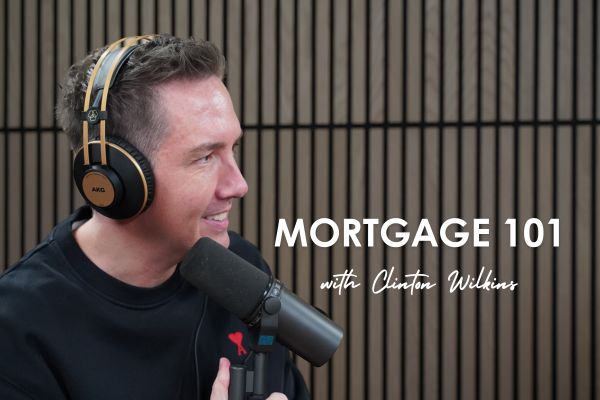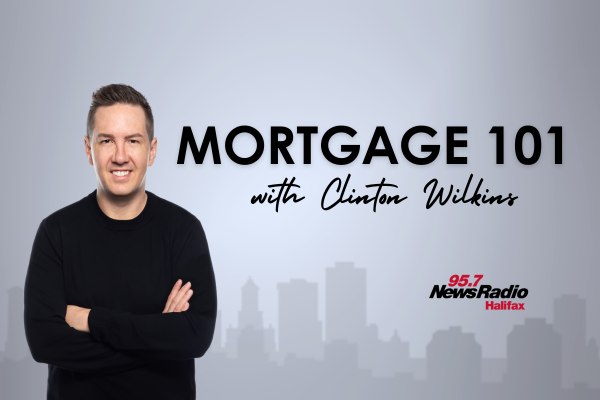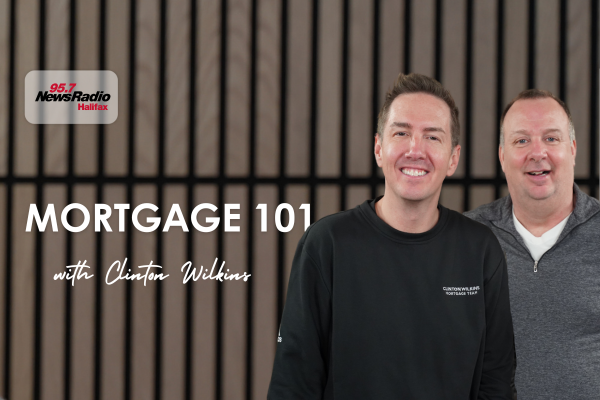Sandi Burns, Chief Credit Officer at Manulife Bank, joins Clinton and Todd to discuss her role in setting mortgage guidelines and managing the lending portfolio while highlighting Manulife's unique mortgage product.
Mortgage 101 – what alternative lending looks like right now | May 2022 Part 4
In this episode of Mortgage 101 with Clinton Wilkins and Todd Veinotte, as heard on CityNews 95.7 and CityNews 101.1, the guys talk about everything going on with alternative lending right now. Learn how an alternative lender could work for you, their rates right now, regulations around alternative lenders and what do to with your mortgage when hardships arise.
Mortgage 101 with Clinton Wilkins & Todd Veinotte: What alternative lending looks like right now
Don’t feel like watching the video? Check out the transcript below.
Transcript:
What is an alternative lender?
Todd Veinotte: [00:00:00:04] Let’s talk alternative lending, because this, why is this something you want to talk about? Why is this important right now?
Clinton Wilkins: [00:00:06:08] You know, I think it’s a little bit, you know, like the future. You know, Todd, as housing becomes more expensive, as you know there’s a stress test and the banks only have a certain tolerance in terms of what they will allow in terms of debt servicing, credit, income, stuff like this. Alternative lenders will lend to people at a higher debt servicing ratio. And they’ll lend to people that might have had some credit issues in the past.
They will also lend to people who are self employed that might not have enough income on their income tax to qualify. You know, they’re more of a make sense lender. And, you know the real estate is the biggest piece that they’re really worried about. Alternative lenders will lend up to 80 per cent of the purchase price or in a refinance situation, they’ll lend up to 80 per cent of the market value of the home.
Alternative lender rates right now
The big difference between an alternative lender and a prime lender is the rates and the fees. Typically, an alternative lender is going to charge you between one and two per cent for a setup fee. And also their rates are closer to where the posted rate would be. So right now, the posted rate with most lenders is somewhere around 5%per cent, 5.25 is what we qualify most transactions on a stress test, and that’s usually where these alternative lenders are sitting.
Some are a little bit higher, some are a little bit lower. It’s based on the amount of risk that you’re going to obviously give to the lender. But they certainly will dig deep. So, for example, we could have someone that has very good credit, but maybe the ratios are way out of whack. Maybe there’s income in their household and we can give a really good explanation about why they can afford this.
Alternative lending for self-employed Canadians
Clinton Wilkins: [00:01:52:06] Like, for example, maybe somebody has some contributory income. You know? The person’s not on the mortgage, they’re not on the deed, but they’re living at the house. And, you know, we can help justify that and they’ll take income sources like that.
Also, if they’re self employed, sometimes we’ll give three months, six months, a year’s worth of bank statements. And we can do a stated income declaration type letter which could show their sales and what they think the expenses are and what the net income is. And that does not take into account their income tax. And that’s typically what we look at for our self employed people.
Regulations around alternative lending
Todd Veinotte: [00:02:24:29] Is this regulated?
Clinton Wilkins: [00:02:28:00] It is regulated. They still have to fit obviously within in a box. They do a bunch of a bucket of mortgages, I will call them, that are non-conforming. But the majority of the transactions that they do need to conform within B-20, B-21, but they are able to take a higher risk than the bank can take.
Todd Veinotte: [00:02:51:27] So the bank under federal law has more parameters than they would have.
Clinton Wilkins: [00:02:58:24] And really even risk tolerance, Todd. Yeah, both It’s not just B-20 and B-21, but it is the risk tolerance that obviously the bank is willing to take on. These lenders will take on a higher risk tolerance.
Todd Veinotte: [00:03:12:24] Why? Why is that?
Clinton Wilkins: [00:03:14:07] Because they’re charging a higher rate and a higher fee. And typically these lenders can have more losses, Todd. So they could have more foreclosures, they could lose more money because they’re charging a higher rate. And that’s really what they’re betting on.
Your mortgage when hardships arise
Usually Canadians pay their mortgages, but not everyone does. You know, people come into hardship. You know, maybe they’ve had a loss of a job, maybe they’ve had some health issues, maybe they’ve gone through a matrimonial breakdown. There’s a variety of reasons that people can kind of run into financial challenges, you know over the years. And alternative lenders are there when you need them. In our market, we have four or five alternative lenders that are very aggressive.
You know, obviously they love the properties that are on city services. That’s usually their biggest appetite. And I’m not saying they absolutely will not lend on more rural areas or more rural properties, but sometimes they want more skin in the game. Maybe they’ll only go to 75 per cent of the property value or 65 per cent or 50 per cent, depending on really what the risk is. Because really the security is very important to them.
You know, if they are taking more risk on you, you have a higher chance of a loss, i.e. a foreclosure, they need to have a better security that if they have to take it back, they want to know that they can sell it.
Todd Veinotte: [00:04:40:17] They still have rate of first refusal, though, on the property, do they not? How does that work?
Lenders foreclosing on properties
Clinton Wilkins: [00:04:47:24] You know, if there was a loss, they would, you know, foreclose just like any other lender would. It would be the same type of situation. No lenders want to foreclose on a consumer. No lenders want to. They don’t make money doing it. Their goal is to recover their capital when they do something like that. And, you know, in a very good seller’s market, consumers typically have no problem selling their home if they come into financial challenges
I can tell you, Todd, we have over 10,000 clients. I get calls all the time when people run into some financial hardship. And they ask me, “Clinton, like, what should I do?” I’m like, You know, sometimes we can do some private lending, sometimes we can do some alternative lending. And, you know, sometimes we can put a Band-Aid on the situation, maybe just like give them time to sell the home. But what I tell people, I’m like, “If there is no exit strategy there is nothing that is not more honourable than selling your home to write your financial situation. You can always buy another property.”
Right your financial situation by selling or refinancing
Todd Veinotte: [00:05:56:22] How often does that happen?
Clinton Wilkins: [00:05:58:01] I think it happens from time to time. And I think in this market here, at least in Halifax and Atlantic Canada, a lot of people that were maybe were in precarious financial position, one have either refinanced because they have a lot of equity and they’ve bettered their situation, or they’ve taken this opportunity to capitalize on what’s going on with the market and they’ve exited and sold their real estate. And I think in a lot of cases some of this real estate has been sold and pave the way for first-time home buyers to become homeowners.
Spring market updates
Todd Veinotte: [00:06:31:05] All right. So quickly, almost out of time, some quick advice, 30 seconds for people in the spring market.
Clinton Wilkins: [00:06:35:28] I think get preapproved. Know what your maximum, maximum that you can afford is and figure out what are you comfortable with. I think that’s really important. I think once you have your pre-approval, you need to have a really, really good realtor. This is the biggest purchase of your life. The mortgage is the biggest debt. Typically the mortgage piece is the easiest piece. This is what we do every single day. I think finding the home, getting an accepted offer is very challenging. It doesn’t matter if there’s more inventory or not, I think that is tough. I think a lot of first time homebuyers are getting fatigued because I know there are some that have made like 20 offers on properties.
Todd Veinotte: [00:07:12:23] Right.
Clinton Wilkins: [00:07:12:26] Stay in the game. Get a good realtor. Get an accepted offer and seek the advice of an unbiased mortgage professional.
Todd Veinotte: [00:07:19:26] If people want to know how to get a hold of you, what’s the best way?
Clinton Wilkins: [00:07:23:05] Check us out online at TeamClinton.ca/Radio. That’s our website. There’s links to our social media. There’s over 500 blog posts on there. Lots of great information. There’s information on rates, our contact information and if you want us to talk about anything on our next show, send us a message. Send Todd a tweet, me a tweet, and we’d love to talk about it on the air. Next Bank of Canada meeting is June 1st and we’ll be on the air in Halifax talking about that as well.
Todd Veinotte: [00:07:49:19] Always a pleasure, Clinton. Thanks so much.
Clinton Wilkins: [00:07:51:06] Thanks for having me.
Todd Veinotte: [00:07:51:25] That’s Clinton Wilkins. Myself, Todd Veinotte. That’s mortgage 101: Your Guide to Homeownership. We’ll be back next month.
If you have any questions, get in touch with us at Clinton Wilkins Mortgage Team! You can call us at (902) 482-2770 or contact us here.


